Trombonist Ray Anderson and composer/conductor Sarah Weaver at Roulette 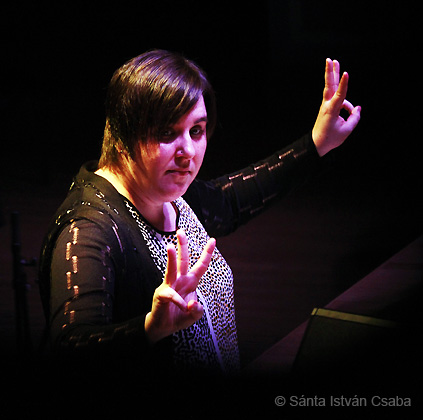 last Sunday hit a collaborative sweet spot. Their unusually mixed, all-star ensemble at Brooklyn’s creative music concert hall wove highly individualized solos into a continuous 50-minute set based on loose, humorous writing and spontaneous textural swells.
last Sunday hit a collaborative sweet spot. Their unusually mixed, all-star ensemble at Brooklyn’s creative music concert hall wove highly individualized solos into a continuous 50-minute set based on loose, humorous writing and spontaneous textural swells. 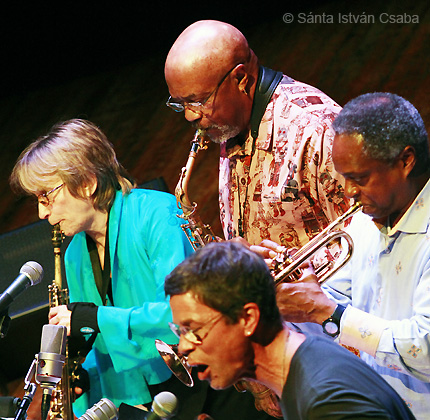
Photographer Sánta István Csaba took photos while I just listened — also to the opening piece performed by Slide Ride, the four-man trombone unit in which Anderson takes part.
Soprano saxophonist Jane Ira Bloom, alto saxophonist Oliver Lake, trumpeter James Zollar and Anderson himself each gave emotive meaning to the single tones they blew and blended to Weaver’s broad hand signals for crescendos, sustains, decrescendos and tone color variations. Pianist Uri Caine employed a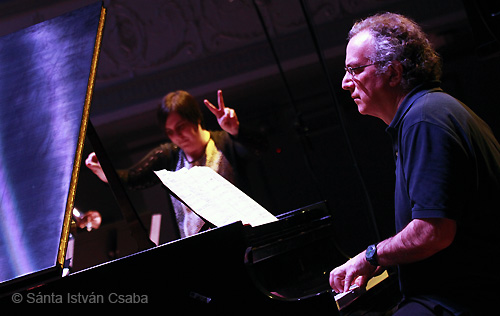 tremelo-like accompaniment during one of the suite-like piece’s movements, but had a lot of ideas. Throughout, bassist Mark Helias added spine and drummer Gerald Cleaver beat steadily, improvisationally, never overwhelming.
tremelo-like accompaniment during one of the suite-like piece’s movements, but had a lot of ideas. Throughout, bassist Mark Helias added spine and drummer Gerald Cleaver beat steadily, improvisationally, never overwhelming.
The entire ensemble worked part of the time from sheet music, but in genuine jazz fashion seemed to be creating in the moment — which was the message Anderson vocalized urgently yet with a grin in his poem “The Point Being” — “The 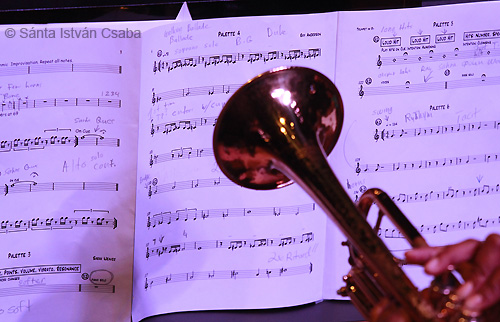 point is being/Being is the point. . . ” which flowed somehow out from the united sound of the septet, which had an
point is being/Being is the point. . . ” which flowed somehow out from the united sound of the septet, which had an
orchestral impact. When Weaver waved in spotlight episodes, Lake let loose a stream of wild notes flying to the ceiling and all but breaking through it. Bloom dove into an exploration and extension of one of the dramatic, romantic Ellington ballads. They were exceptional, but it was all good.
There were clues throughout the performance as to whether Anderson or Weaver was responsible for certain moments of the ensemble’s direction, but I 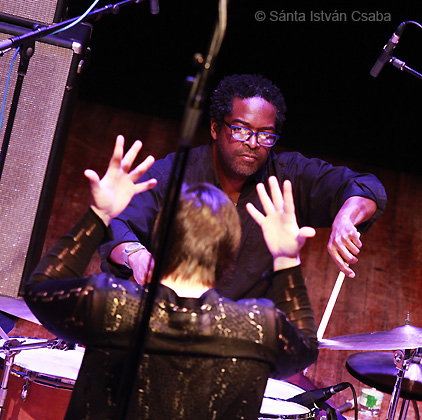 doubt anyone in the audience was thinking hard about who’d written what, as the entirety unspooled with an unforced grace.
doubt anyone in the audience was thinking hard about who’d written what, as the entirety unspooled with an unforced grace.
In the quartet Slider Rde, with stellar trombonists Craig Harris, Art Baron and Earl McIntyre besides Anderson each leading the group a piece of their own, the stylistic demarcations were clearer — not that those differences made much difference. The musicians in both concert halves were there to work together by being themselves, in the moment. That was the point. In jazz-beyond-jazz, it’s always the point.
[contextly_auto_sidebar id=”uvEo0D9bZaweTQDV3rAGyZmrstpg9UXr”]
